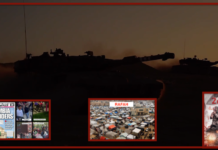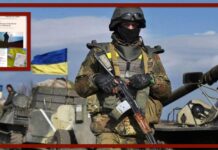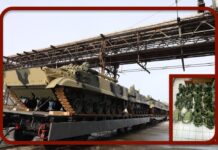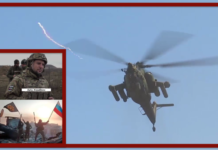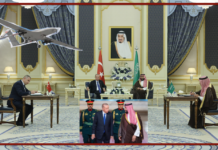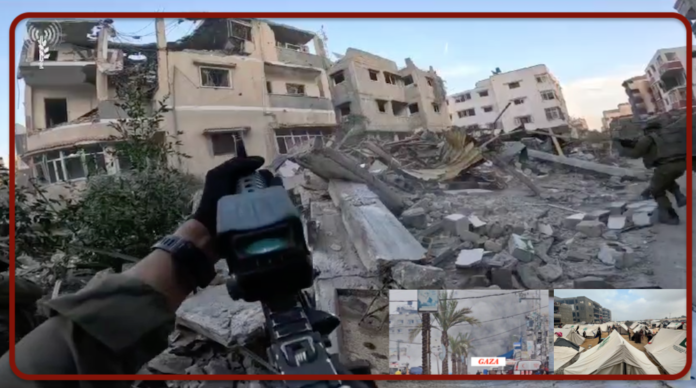
Today marks 60 days since Israel has waged a war against Hamas and there is currently no prospect of an end to the conflict. The brigades that linked themselves to Hamas called to participate in simultaneous activities in Palestine, Jordan, Tunisia and Lebanon in front of the Red Cross headquarters to protest against “the negligence and complicity of international institutions with the Israeli occupation”.
Not only that, for the first time Hamas called young Palestinians and non-Palestinians to arms, young people who espouse the cause: the first to respond were the young people of the Jordanian resistance movement. Who will soon join the fight.
Israel, on the other hand, is starting to do the math in its pockets: the war, as of December 4, had cost it 51 billion dollars. 29% of economic activities in the West Bank are closed. And still 3% of Israel’s working population is at war. The number of dead soldiers as of December 5, according to the IDF, amounted to 406. Not only according to the Israeli Health Service, the Israeli soldiers suffer from a “dangerous” and “unusual” disease of the “Shigella” bacterium contracted in Gaza. Massive cases of diarrhea and intestinal disease have been recorded, and it is suggested that the reason is poor conservation of food supplies.
The UNRWA Spokesperson explained that: “We have begun to notice the spread of hepatitis among displaced people”, which is not unusual in the Gaza Strip. And now the taps in Gaza have been turned off. According to the Ministry of Health in Gaza, the number of deaths has risen to 15,899 since the start of the Israeli operation against the Gaza Strip. Of these, 145 civilians were killed during the night between 4 and 5 December following Israeli raids in the northern Gaza Strip.
However, the situation will not change anytime soon. The Israeli Defense Minister told ABC: “We will fight in Gaza for several months to carry out clearance operations and eliminate pockets of terrorism.”
And perhaps it will be many months, given that according to Financial Times sources: “The Israeli army estimates that Hamas’ tunnel network in Gaza is larger than the London Underground railway network. The word tunnels does not describe what Hamas has created under the Gaza Strip, but rather they are underground cities.”
And now a look at the front of the Israeli-Palestinian conflict: 2-5 December 2023.
In recent days, after the end of the ceasefire, the IDF air force has launched continuous attacks on the Gaza Strip. It most often targets facilities in the south of the enclave, where fighters are launching the next phase of the ground operation.
At the same time, clashes resumed throughout the control area in the north and north-west of the Gaza Strip. Fighting continued near Sheikh Radwan, Beit Lahiya, Beit Hanoun and the site of the Supreme Court building in Gaza.
On Monday, the Israelis pushed deep into another area of Gaza City, in the northern part of the enclave. Local Palestinian sources reported fierce fighting on Baghdad Street in the Shuja’iyya neighborhood. Commander of the Southern Command, Major General Yaron Finkelman:
“We are in the heart of Jabalya, in the heart of Shuja’iyya, and now also in the heart of Khan Yunis. We are in the busiest day since the start of the ground operation – in terms of terrorists killed, number of firefights and “use of ground and air firepower. We intend to continue to strike and secure our results.”
Shortly thereafter, the Israelis carried out an incursion into the Gaza Strip from a new direction. The IDF entered the enclave in the area between Khan Younis and Deir al-Balah. They managed to penetrate deep into the enclave and reach the central Salah al-Din Road. This tactic was used first in a northerly direction.
Palestinian groups, meanwhile, regularly counterattack in all areas where fighting takes place. They occasionally manage to significantly damage IDF equipment and personnel. However, they fail to stop the Israeli advance.
At the same time, militants continue to bomb central and southern Israeli cities. Most missiles fall into open terrain or are intercepted. However, some of them caused damage in Ashkelon, near Tel Aviv and other cities.
On the Israeli-Lebanese border, the IDF and Hezbollah carry out daily attacks along the entire line of contact. The attacks on the Beit Hillel base and a stronghold near Shtula left around 15 Israelis injured and military equipment damaged.
According to Lebanese sources, 4 Beirut army soldiers were also injured, one of them seriously. Hezbollah has returned to launching barrages of rockets and anti-tank missiles in the last few minutes on Israeli settlements on the Lebanese border.
Antonio Albanese e Graziella Giangiulio



